This history of Royal Ariston of British Columbia begins with understanding that Royal Ariston was the brand name of a line of ceramics introduced by the Importex Company of Vancouver. From the late 1920s to WWII, Importex, managed by Frederick Leuchte, imported ceramic items from Germany, including lamp bases. During the war, German products were unavailable, so the company began producing its own ceramic wares. These ceramic wares were manufactured under the Royal Ariston brand name. This pottery line was first advertised by Importex in 1950.
Early Importex Company wares manufactured between 1939 and 1945 are not easy to find. Later pieces of Royal Ariston can be identified through glazes, mould numbers and the Royal Ariston marks. In 1954, Importex sold out to BC Ceramics and the moulds and glazes, along with the experienced engineers and artists, such as Walter Gerz and his wife Herta, transitioned to the better known company, BC Ceramics – in effect, ‘borrowing’ the shapes, moulds and mottled glazes of the the Royal Ariston brand. Unless a piece is marked with a mould number, it cannot be positively identified as an Importex or a BC Ceramics piece. (Information provided by Museum of Vancouver)
History
Production years: Importex: 1928-1954; BC Ceramics: 1954-1967
Location: 1654 Franklin Street, Vancouver, B.C., Canada
People: Owners: Otto Fleischhauer and brothers Leonard & Bernard Frank. Walter Gerz: 1951- Ceramic Engineer. 1955 – Walter Gerz would go on to run his own company, BC Ceramics, with his wife, Herta Gerz.
Materials: ♦ Slipcast ♦ white clay ♦ moulds ♦ matte glazes & colours, mottled glaze techniques
Popular Glazes:
- Mottled turquoise to brown (purple brown) glaze
- High gloss mottled turquoise glaze with mottled brown highlights
- High gloss mottled pink glaze with white highlights
- Mottled turquoise glaze with incised design
- Bright red to mottled grey glaze
- Turquoise to darker blue mottled glaze
- Mottled green to brown matte glaze
- Burgundy high gloss glaze to black base
- Cream to brown mottled glaze
- Mottled brown to light green high gloss glaze
- Speckled pink to green high gloss glaze
- Mottled white to black glossy glaze
- Mottled brown to pink glossy glaze
- High gloss pale pink glaze with mottled brown
- High gloss mottled pink to brown glaze with turquoise accents
- High gloss turquoise glaze with white drip or overflow glaze
- High gloss turquoise with light and dark brown drip glaze
- High gloss orange glazed with accents of olive green
- Black, Burgundy, Gold, Dark Green or Yellow-green high gloss glazes
- High gloss brown glaze with mottled green and white
- Brown, pink, beige mottled matte glaze with high gloss mottled turquoise to beige glaze
- Turquoise to mottled grey high gloss glaze
- High gloss yellow to mottled brown glaze
- High gloss lime green glaze with mottled brown highlights
- Black with mottled grey
- Pale turquoise to pale pink mottled glaze
- Mottled brown to yellow high gloss glaze
- Mottled brown to turquoise matte glaze
See Additional Resources: Thanks must go to Allan Collier of Victoria, BC for his invaluable background information.








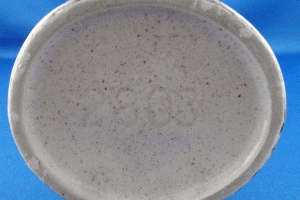


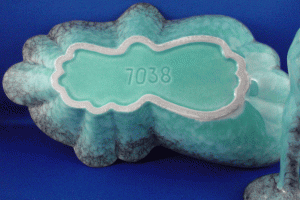

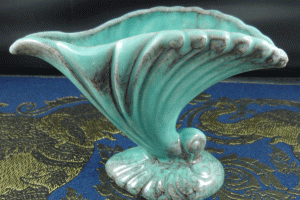


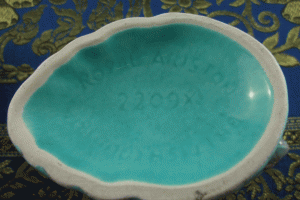
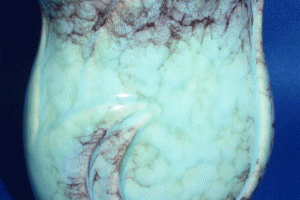





I’ve been doing the “spring cleaning” thing and forgot how many beautiful pieces of royal artisan pottery I have. Then I looked up the name again and here is this group.
What is the value of my mottled turquoise vase with mottled brown highlights? The mould number is 2805. In addition, it is marked British Columbia. It was purchased in about 1953. It is in perfect condition.
Glenys, Thank you for your inquiry. I do not do online evaluations, and suggest online marketplaces are the best resource for values at any given time. To evaluate current dollar values, do an internet search for BC Ceramics and Royal Ariston. Maria.
Here is the base underneath.
Thanks, Kevin, for the base photo of your Royal Ariston brown vase.
Hi There great site. I acquired this Royal Ariston piece and wondered if you would be able to roughly date it by chance? There is no mold marks or information underneath.
Kevin, it is difficult to date your piece for a couple of reasons. First, there is no mark on the vase base and this makes it difficult to date it. Secondly, the sticker picture is not very clear – I cannot zoom in to look at it more closely. I can say that the glaze colours suggest the period of 1950-67, and the shape of the sticker suggests dates from 1950-54. So I would say this piece was produced in the 1950-54 date range. Hope this helps. Maria.
Sorry, I should have looked harder before asking my question. I found a picture of mould #2803 on your website. Turns out it is an antelope, not a fawn 🙂
I’m glad my site was able to provide you with information on your vase. Maria